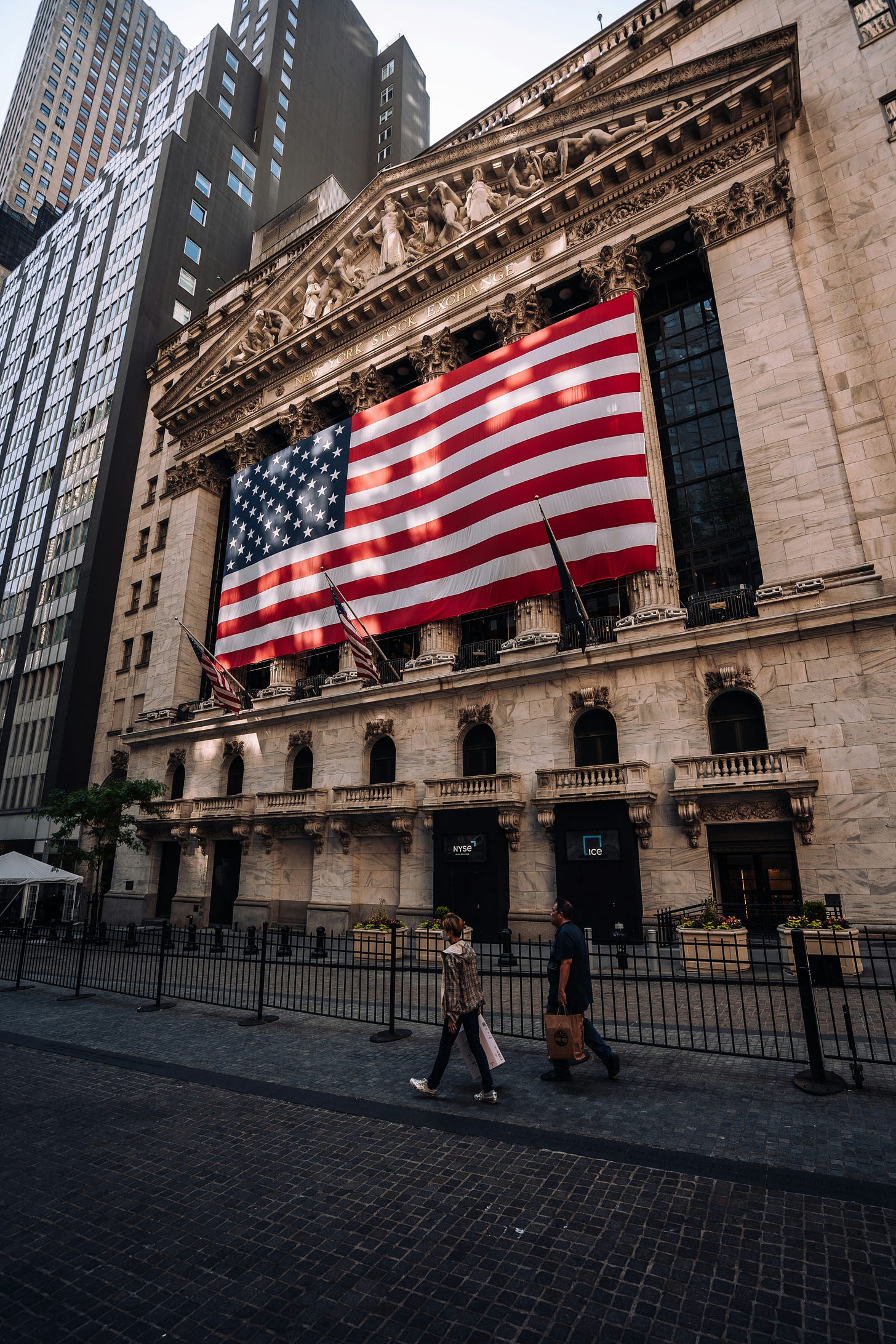Is It Time to Underweight the U.S.?
Next quarter, yes. Next year, maybe. Next five years, absolutely not!

Early voting started last week with America’s two political camps at each other’s throats, the Federal Reserve attempting an almost unprecedented “soft landing” and a stock market heading back to all-time highs as if nothing could go wrong. The savvy global investor will naturally ask if it's finally time to underweight exposure to U.S. markets.
There are three reasonable answers.
“For the next quarter, yes.” After outperforming key international markets in four of the last five years, the S&P 500 is once again surging toward new highs, following strong jobs and consumption data and clear signals that cheaper money is on the way. But with a forward price-to-earnings ratio of topping 20 and a dividend yield barely above 2%, there’s little room for error.
There may still be plenty of cash on the sidelines, but it doesn’t take much of a data surprise to send investors running for safety as we learned twice this summer. Last week’s 2.5% consumer price inflation report included worrying signs of a housing market that remains tight, while lower payroll numbers the week before triggered fears of an air pocket.
Then there is the small matter of a bitter election contest between two very different presidential candidates. Under any outcome, U.S. economic policy will continue its decisive turn towards protectionism and industrial policy. But Kamala Harris and Donald Trump offer very different sets of specifics -- especially on taxes, tariffs and immigration – that imply very different investment outcomes.
My instinct is that a Harris win might drive stocks moderately higher for a week or two as political uncertainty subsides, although that depends on whatever protests or lawsuits attempt to challenge a close result. A sharp rally following a Trump victory seems less likely than in 2016. Higher deficits and debts make big tax cuts much harder this time, while inflation expectations may rise if fresh tariffs drive up consumer prices and the eviction of undocumented migrants shrinks the labor force.
“For next year, maybe.” As uncertainty dissipates, market attention will turn back to whether the Fed can still stick the landing. Whether the Federal Open Market Committee delivers 25 or 50 bps of cuts this week, rates will be as much as 2 percent lower by the end of next year, which should give markets a boost. If growth and inflation end the year within spitting distance of 2% while keeping unemployment near 4%, Jerome Powell and Co. will have exorcised the ghost of Paul Volker that haunts the Marriner S. Eccles Building.
But for an investor, there are plenty risks beyond avoiding recession starting with unpredictable U.S. fiscal hurdles. First, the new president and Congress will likely be operating under a Continuing Resolution that will need to be extended (assuming the current crew manages to keep the lights beyond the next two weeks). Then the debt ceiling comes back into force on January 1, forcing the Treasury to fall back on extraordinary measures to stave off default through the transition to a new administration.
Most challenging will be addressing the expiration of the 2017 Trump tax cuts, which will involve bitter negotiations over a fresh mix of spending and revenue. On the likely presumption that Republicans and Democrats will have to compromise, the deficit won’t change much. But the details of who gets taxed and who qualifies for a subsidy will matter greatly for any given portfolio. Trump’s pledge to redirect money from the Inflation Reduction Act, for example, will be a boon for oil and gas at the expense of solar and wind.
The details of Trump's tariffs and immigration promises will matter, too. Presumably, the 60% levies on Chinese imports and 10% on everything else may be phased in as part of a negotiating strategy, but that will make their impact all the more difficult to predict. Meanwhile, efforts to round up millions of undocumented migrants promise to be socially disruptive and economically costly, but the pain may be difficult to predict.
A sharp rally following a Trump victory seems less likely than in 2016. Higher deficits and debts make big tax cuts much harder this time.
For the next five years, absolutely not! Okay, five years is a long time, but investors should not get lost in the by campaign gloom about America in decline. There’s little reason to believe that the combination of open markets, strong institutions and leading research universities won’t continue to produce superior returns over time.
Moreover, if you are looking at the industries that will drive the next chapters of innovation and productivity, where else will you find them? China’s plans to lead in robotics, biotechnology and artificial intelligence will surely produce results, but the global leaders are still mostly American. Even if you find a better technological alternative in China, a pattern of lax corporate governance won’t necessarily make for a good investment.
So as votes roll in and the Fed clarifies its plans for rate cuts, this may well be a good time to take some money off the table. A soft landing next year offers promise, but the policy choices in Washington will deliver nasty and unpredictable surprises to certain companies and their investors. But don’t bet against America’s companies on a much longer time horizon. If the politicians have lost their way for now, the companies are still by and large the world’s the most reliable engines for innovation and growth.


